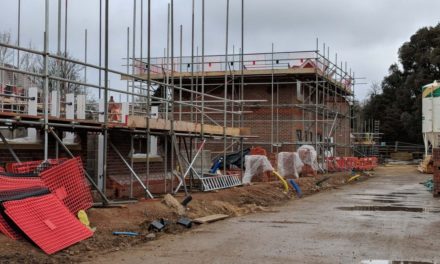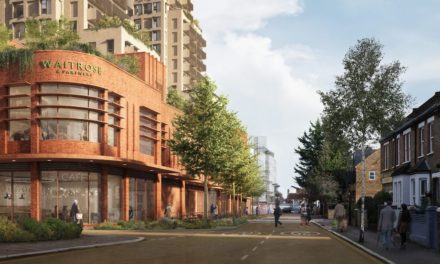The Mayor of London, Sadiq Khan, is joining organisations from across the planning and housing sectors – including the Royal Town Planning Institute, London Councils, the Local Government Association, the British Property Federation and Shelter – to call on the Government to scrap their proposals for a new Infrastructure Levy in the Levelling Up and Regeneration Bill.
Under the proposals, the amount developers will have to pay to support vital improvements to transport facilities, schools, health centres, open space and play space, as well as affordable housing, will be calculated once a project is complete, instead of at the stage the site is given planning permission as it is currently. This would, at best, delay and, at worst, lose such improvements, reducing affordable homes. Councils will also be expected to set their rates for different types of development, such as residential and commercial, and for different areas, requiring a highly complex and labour-intensive assessment and charging system, something that local councils can ill-afford.
The new Levy would replace the current Community Infrastructure Levy (CIL), used by local planning authorities in London, and Section 106 agreements which obligate developers to deliver a range of facilities and services, including affordable housing. By the end of 2021/22, the CIL had generated approximately £1.43bn for councils to deliver vital infrastructure and support sustainable growth across the capital.
The Mayor’s planning policies have significantly increased the percentage of affordable homes in new developments over the last five years. The average percentage of affordable housing in schemes assessed by the Mayor has risen from 22 per cent in 2016 to 41 per cent in 2022 and 45 per cent when measured by habitable room.
Sadiq has overseen a renaissance in council house building, with more council homes started in London last year (2022/23) than any year since the 1970s and more homes of all types completed than at any time since the 1930s.
However, City Hall research published today shows that the new Levy would threaten this progress and, had it been in place, could have resulted in between 4,500 and 10,000 fewer affordable homes in applications referred to the Mayor over the last three to five years. It could also have made between 10,000 and 30,000 homes of all tenures unviable. (1)
Last-minute amendments have been tabled by the Government prior to the House of Lords voting on the proposals. These include a requirement that local authorities ‘seek to’ ensure the level of affordable housing funded and provided by developers is maintained or exceeded when setting Levy rates. However, an additional amendment removes this duty if it would result in development becoming unviable. While welcome in principle, these changes fail to address the fundamental issue that requiring affordable housing through a fixed levy system is likely to result in low rates being set and fewer homes being delivered than at present. The government has also confirmed that this relates to rate setting only and would not require authorities to spend funding from the Levy in a way that would deliver the same or more affordable housing as at present.
Another government amendment would enable the Secretary of State to remove the Levy in an authority area if this was not working as intended. This is, however, intended to be retrospective and would not enable authorities to opt out and retain the current system, even if there was evidence that adopting the Levy would result in a lower level of affordable housing and infrastructure funding.
Further proposed amendments fail to address a range of other concerns with the Levy, including that it would:
· Put billions of pounds of investment in community infrastructure at risk. Rather than being delivered alongside new development, these facilities would be delayed or may not come forward at all because payments would be made at the end rather than the beginning of the construction process.
· Be based on the value generated by the development, which would require a highly complex valuation process, creating greater uncertainty and risk for councils, developers and communities. Councils also believe it would be difficult to enforce the payment of contributions after a development has been completed. If, however, payments were made at an earlier stage, this would require additional valuations for each development phase, which would make the process even more complex and resource intensive.
· Allow developer contributions to be spent on general council services or other items that are entirely unconnected to development. This would exacerbate significant existing funding shortfalls in affordable housing and infrastructure place additional pressure on local communities and increase opposition to development.
· Restrict the use of Section 106 (planning obligations) agreements which may prevent off-site mitigation works from being undertaken, or other essential obligations such as employment and training measures, affordable workspace, construction monitoring or carbon offsetting from being secured.
·Cause a complex and costly transitional period as authorities would need to operate, monitor and enforce several different contributions systems at the same time.
The Mayor of London, Sadiq Khan said: “I welcome the Government’s ambition of securing more funding for
affordable homes and infrastructure and creating a developer contributions system that is quicker, clearer and more consistent. Unfortunately, the proposed Infrastructure Levy fails to achieve any of this.
“Ministers should work with councils and the housing sector to improve the current developer contributions system, building on the trailblazing progress we have made in London in recent years as we seek to create a better, fairer and more prosperous city for all.
“Unworkable proposals like the Infrastructure Levy cause uncertainty and eat up resources from a planning system that is already struggling. This proposal needs to be dropped from the Levelling Up Bill so that the development sector can focus on delivering the affordable homes and community infrastructure that Londoners desperately need.”
Gavin Smart, chief executive, Chartered Institute of Housing said: “Since the Levy was first proposed in 2020 CIH, along with many others in the sector, have continued to raise concerns about the proposed replacement of Section 106 with a new Infrastructure Levy.
We are particularly worried about the risk of the Levy reducing the development of new affordable homes, particularly social rented homes. Section 106 accounts for almost half of all affordable homes delivered annually, and the provision of genuinely affordable housing must be protected.
“The amendments recently tabled by the government are welcome, and they will go some way to addressing some of the concerns raised. However, we continue to believe that improving the current system of S106 would be better than unnecessarily scrapping it entirely and introducing an entirely new system, despite concerns from all sides that it will add layers of complexity and may not deliver for the many areas most in need of “levelling up”. We believe the resources and work associated with getting this complex Levy system up and running would be far better used to reform and improve the current system, which is well understood by local planning authorities, developers, and social housing providers alike.”
Sarah Bevan, director of Planning and Development at Business LDN, said: “Whilst the Government is seeking to speed up the process through an overhaul of the planning gain system, we believe that its draft proposals for a new Infrastructure Levy will, in fact, exacerbate timescales further and deliver less infrastructure and affordable housing than the current system. Reforming the existing system could simplify and speed up the process without jeopardising delivery.”
Significant issues with the proposals have also been highlighted in documents published by the Government, with the Regulatory Impact Assessment for the Bill estimated that the Levy would result in a net cost to the publicpurse of more than £700m, excluding any loss in the level of contributions.
Research published by the Department of Levelling Up, Housing and Communities led by the University of Liverpool also identified a range of potential challenges for local authorities, including setting Levy rates for brownfield development without making development unviable, delays to the local plan process and the need for additional training and support, given the degree of departure from the existing system.
1. This is because the proposals include affordable housing within the scope of a fixed non-negotiable chargefor the first time, despite this approach being rejected when CIL was introduced in 2008. Setting Levy rates at the level needed to maintain current levels of affordable housing could make less viable developments undeliverable. Conversely, setting lower rates would reduce contributions and the amount of affordable housing and infrastructure provided to support the delivery of development. In practice, both are likely to occur.
Photo by Robert Eklund on Unsplash
© London West (powered by ukpropertyforums.com).
Sign up to receive our weekly free journal, The Forum here.



















